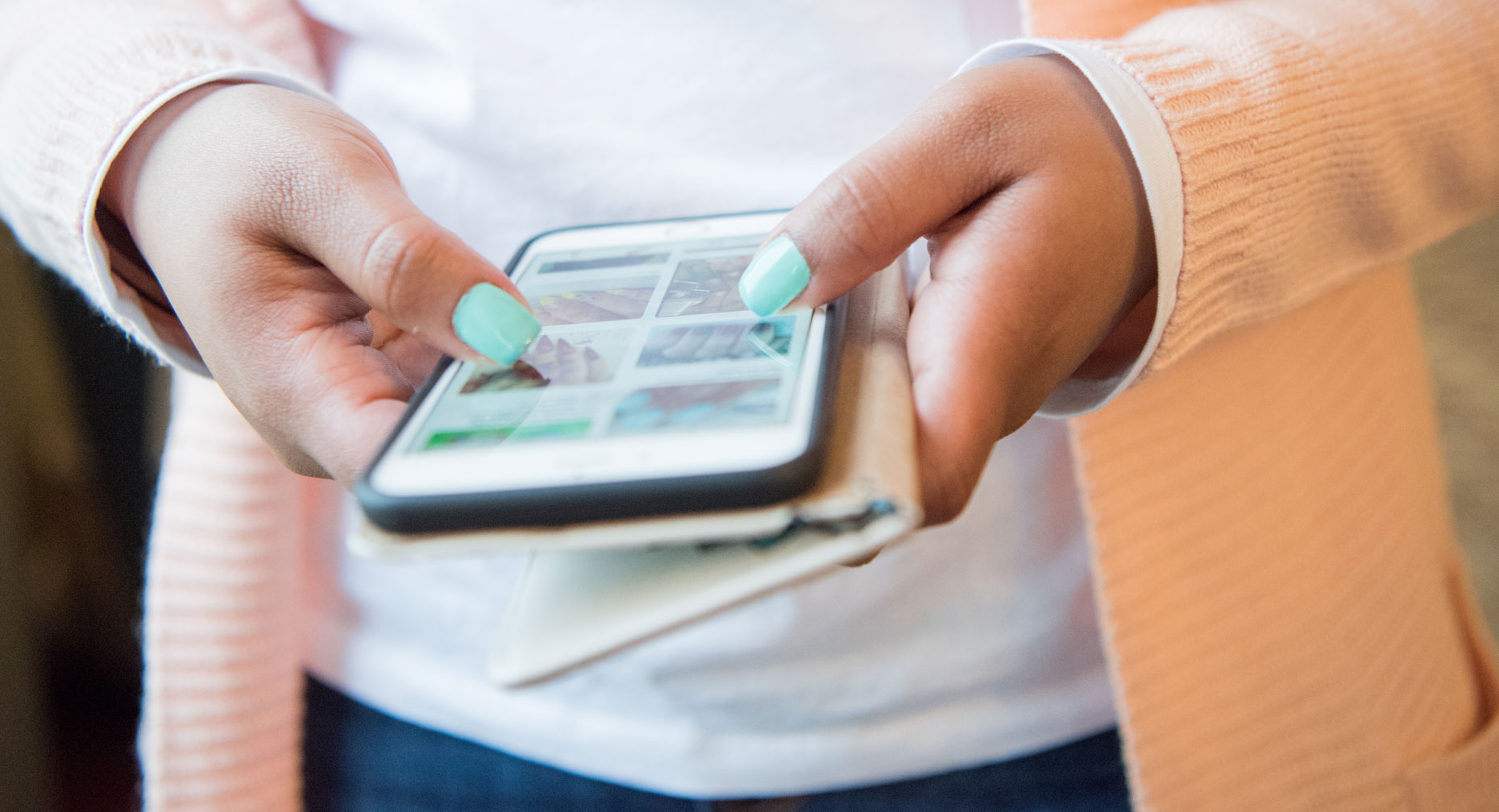- Bone and Joint Health
- Hand and Wrist
- Health Topics
- Joint Conditions/Injuries/Treatment
- Joint Pain/Pain Management
- Lifestyle
- Osteoarthritis
Why Your Smartphone Can Be a Real Pain

Answer a few questions and we'll provide you with a list of primary care providers that best fit your needs.
If you have a smartphone, chances are it’s nearly always close at hand – if not actually in your hand.
If you’re a typical smartphone owner, you use this handy device many times a day – to text, surf the web, post on social media and even make the occasional phone call. And that’s the reason smartphones have become a common cause of the aches and pains of repetitive strain injuries (RSI) that affect tendons, nerves and muscles. If this sounds familiar, it’s because the same is true of earlier tech innovations like personal computers and their keyboards, which contribute to carpal tunnel syndrome.
Before your tendons, nerves, and muscles start complaining, you can gain the upper hand on your smartphone – and reduce your risk for repetitive stress – with wise smartphone use.
You’ll be helping yourself to avoid the pain of these common smartphone-related strain injuries, says Krista Storms, occupational therapist and certified hand specialist at Miami Valley Hospital South Sports Medicine:
DeQuervain’s Tendinosis, or “texter’s thumb,” which results in pain in the thumb and thumb side of the wrist. The cause? Irritation and swelling of tendons around the base of the thumb, from repeated wrist motions in activities such as typing, knitting, racquet sports, grasping tools, and texting on a cell phone.
Cubital Tunnel Syndrome, “cell phone elbow,” which causes numbness and tingling in the ring and small fingers, forearm pain, and/or hand weakness. What’s at work here: pressure, stretching, and resulting inflammation of the ulnar nerve. This nerve runs in a groove on the inner side of the elbow. You’re at greater risk of this condition if you have a narrower than average cubital tunnel, in which the ulnar nerve runs. Symptoms often occur when the elbow is bent, as when you use your smartphone or sleep at night.
Treatment For Smartphone Stress Pain
Several nonsurgical treatments can ease symptoms and help the affected tendons or nerves heal, Storms says.
For DeQuervain’s Syndrome:
- Avoiding activities that contribute to the pain and inflammation
- Splints that rest the thumb and wrist and allow the inflamed tendons to heal
- Exercises or physical therapy to stretch, strengthen, and improve range of motion of the wrist and thumb
- Cold packs to reduce inflammation
- Prescription or over-the-counter pain medications
- Injection of corticosteroids into the tendon sheath, the covering around the tendons, to reduce swelling and pain
Surgery is a last resort, making more room for the tendons to move without irritation.
For Cubital Tunnel Syndrome:
- Avoiding activities that cause symptoms
- Wearing a splint to keep your elbow from bending while you sleep
- Seeing a hand therapist to help you prevent pressure on the ulnar nerve
If nonsurgical options don’t work, surgery may be recommended to create more space for the nerve in the cubital tunnel – to avoid or lessen irritation.
How To Avoid Those Smartphone-Related Injuries

The best cure can be using your smartphone in ways that avoid the irritations that lead to the pain of texter’s thumb and cell phone elbow.
Here’s what Storms recommends:
- Use both hands. That is, don’t text or scroll with the thumb of the same hand you’re cradling the phone in. Hold the phone in one hand, and use the thumb or index finger of the other. Sure, you’re so flexible you can do it one-handed, but this reduces stress on your wrist and thumbs.
- During a phone conversation, switch your phone from one hand to the other. “That way you don’t have the same elbow bent the entire time,” Storms says. You’ll also give that ear a rest.
- “Better yet,” adds Storms, “use the speaker phone feature or Bluetooth headset.” This gives both hands a break.
- Take a break periodically to rest your wrists, elbows, and arms. “Extend the elbow, straighten the arm, and extend the wrist back,” Storms says. “This helps stretch and reduce pressure on the nerve.”
- Keep text messages short. And use abbreviations and word predictions suggested by your smartphone to cut out key strokes.
- Use settings on your phone or apps like Swype. These allow you to swipe your index finger in a continuous, flowing motion across the keyboard, from one key to the next to text, while you hold the phone in your other hand. This eliminates stress on your thumbs and wrist. “You take the thumb out of the equation.”
- Use speech-to-text apps. This eliminates all texting motions. Just be sure to proof your work!
Be Nice To Your Neck, Too
And though they’re out of her realm as a certified hand therapist, Storms says the neck and cervical spine can also suffer from smartphone use.
“Like your mother always told you, use good posture. Sit up straight and don’t look down at your phone. Bring your phone higher up so you’re not looking down and stressing your neck.”
Which, by the way, can lead to a condition with its own tech-related term – texting neck.
Answer a few questions and we'll provide you with a list of primary care providers that best fit your needs.
Source: Krista Storms, occupational therapist and certified hand specialist at Miami Valley Hospital South Sports Medicine; American Society for Surgery of the Hand; Scientific American; American Academy of Orthopaedic Surgeons





